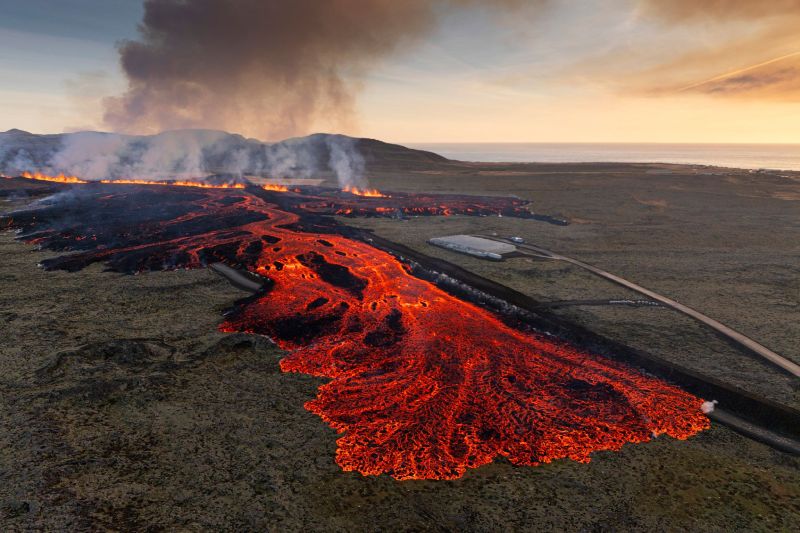Iceland Experiences Fewer Earthquakes when the Risk of a Volcanic Explosion Decreases

On Saturday morning, the Reykjanes Peninsula in Iceland was rocked by dozens of earthquakes, prompting officials to warn that the likelihood of a volcanic eruption had grown. However, by Saturday night, they declared that the probability of an eruption had decreased.
Over the last two days, a cluster of tremors has been detected by the Icelandic Met Office in an area on the southwest half of the island that has been experiencing monthly activity. It seemed like the most of them occurred early on Saturday morning. The number of earthquakes had drastically decreased by the evening.
Four Traditional Volcano Types
Authorities declared an Orange alert for the Reykjanes area, stating that magma intrusion has begun east of Súlingafell town. As of Saturday night, the Orange alert remained in place, although authorities reported seeing indications that the incursion had ceased.
“The Icelandic Meteorological Office continues to monitor the area to observe whether the activity resumes in the next few hours, or if the magma intrusion has halted completely,” officials wrote on the agency’s website. “It remains possible that magma could ascend to the surface, as has been observed in eruptions near Fagradalsfjall.”
RUV reports that Grindavík and Svartsengi, two nearby towns, were ordered to be evacuated. Another well-liked local tourist destination, the Blue Lagoon, has been evacuated. By Saturday night, it remained unclear if those orders had been revoked.
In the event that an eruption takes place, it would be the fourth since the end of 2023; the first three took place on December 18, January 14, and February 8.
Since the activities began in late last year, inhabitants of Grindavík have been evacuated multiple times.
While no injuries have been reported from any of the eruptions, the Jan. 14 eruption caused some homes to be damaged by lava flows.